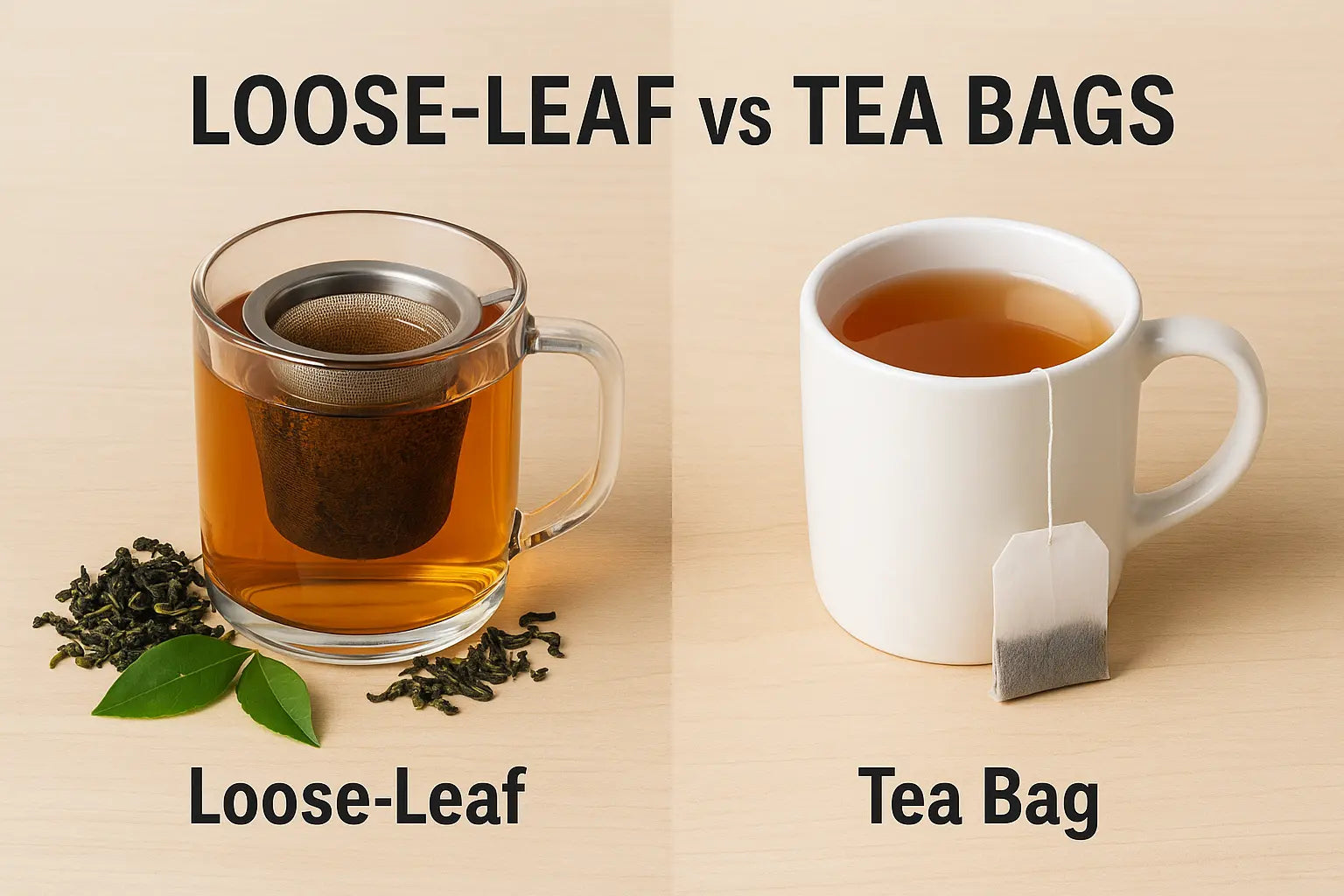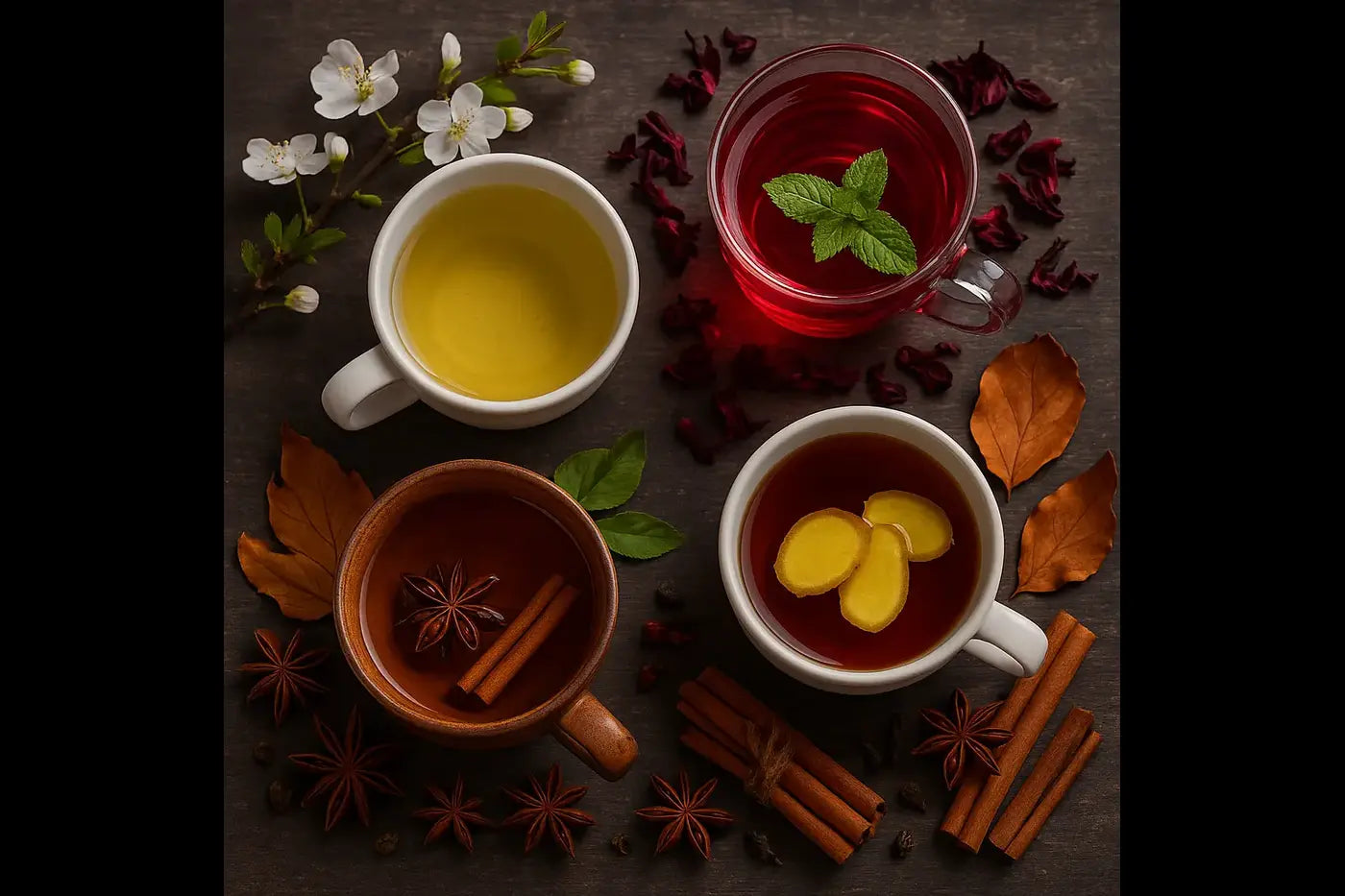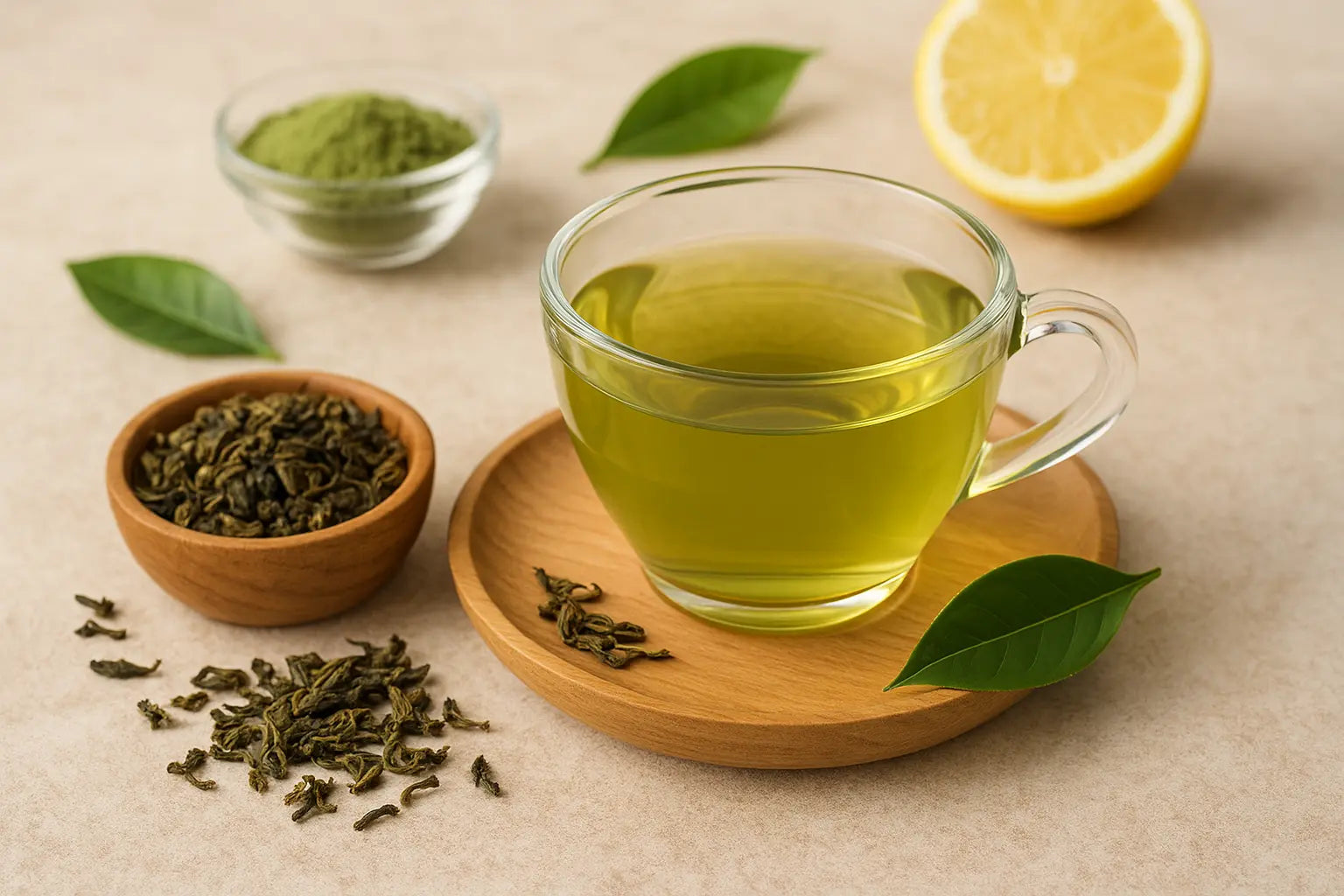
Loose-Leaf vs Tea Bags: A Clear, Helpful Comparison
If you love tea but feel torn between loose-leaf and tea bags, you’re not alone. Both formats can deliver a good cup, what matters is how you brew and when you drink. This guide walks you through taste, cost, convenience, sustainability, and health considerations in a logical flow so you can choose confidently for everyday India conditions (busy mornings, office kettles, hard water, travel).
What we’re comparing (simple definitions)
-
Loose-leaf tea uses larger, more intact leaves you measure yourself and brew in a mug or pot using a basket infuser, paper filter, or strainer.
-
Tea bags are pre-portioned packs (often smaller particles) made for single cups with minimal cleanup.
Why this matters: Leaf size and space to unfurl influence extraction. Bigger pieces generally brew more layered flavours; smaller particles extract faster and can taste stronger (sometimes harsher) if over-steeped.
Taste & aroma (the heart of the decision)
Loose-leaf often wins on flavour.
-
Larger leaves + room to expand = better aroma and rounder mouthfeel.
-
You control leaf quantity, water temperature, and steep time, so you can fine-tune sweetness and reduce bitterness.
Good bags still exist.
-
Premium “pyramid” bags using larger cuts can taste excellent—especially when brewed at the right temperature.
India-specific tip: If your green tea tastes bitter, the culprit is usually water too hot. Aim ~75–85 °C for greens (let boiling water sit for 2–3 minutes), and steep for just 2–3 minutes.
Cost-per-cup (do the easy math in ₹)
A straightforward formula:
cost per cup = (price ÷ grams) × grams per cup
-
Loose-leaf: 2–2.5 g per 200–250 ml is typical. Many greens/oolongs re-steep once, so your effective cost per cup can drop by half.
-
Tea bags: Usually 1 bag = 1 cup, with limited re-steep potential.
Illustrative example
-
Loose-leaf tin: ₹500 / 100 g → ₹10/g. At 2 g per cup = ₹20/cup (or ~₹10/cup if you re-steep once).
-
Tea bags: ₹300 / 25 bags ≈ ₹12/cup (normally no re-steep).
Takeaway: Bags feel cheaper per cup up-front; loose-leaf often wins long-term—especially if you re-steep and buy smart.
Ready to compare with actual products? Browse Leafbox Loose-Leaf Teas. Prefer clean, daily drinking? See Leafbox Green Tea.
Convenience & cleanup (real life in India)
-
Tea bags are unbeatable for speed and predictability. They’re perfect for office pantries, trains, hotels, and quick mornings.
-
Loose-leaf can be nearly as easy with one tool: a wide basket infuser. Scoop leaves, pour water, lift infuser, rinse — done. Biodegradable paper filters are another tidy option.
-
Smart routine: Use bags when you’re rushed; switch to loose-leaf when you have 3–5 calm minutes (weekends, evenings).
GEO tip: Many Indian metros have hard water, which can flatten flavour. A simple household filter can noticeably improve your green/white tea cups.
Health, caffeine & add-ins (plain language)
-
Caffeine depends on tea type and brew time, not strictly on format. Greens/whites usually moderate; oolongs vary; herbals (tulsi, chamomile, peppermint) are caffeine-free.
-
Better flavour control with loose-leaf may help you use less sugar/milk.
-
No medical claims: Tea complements a balanced lifestyle. If you have specific conditions, consult a healthcare professional.
Sustainability & storage
-
Loose-leaf: Minimal packaging; leaves are compostable; tins are reusable.
-
Bags: Look for plastic-free or biodegradable bags and recycle outer cartons where possible.
-
Storage for Indian humidity: Airtight, opaque tins; keep away from heat, light, and spices. Close promptly after scooping.
When each format is the better choice
Choose tea bags if you:
-
Want zero gear and the fastest cup possible.
-
Brew mostly at work, travel, or hotels.
-
Prefer consistent strength without measuring.
Choose loose-leaf if you:
-
Care about nuanced flavour and custom strength.
-
Plan to re-steep and optimise cost-per-cup.
-
Enjoy a small daily ritual and variety (greens, oolongs, single-origin blacks).
Brewing basics (reliable results, step-by-step)
Loose-leaf fundamentals
-
Dosage: 2–2.5 g per 200–250 ml (about 1 heaped teaspoon for many teas).
-
Water temperature (guide):
-
Green: 75–85 °C
-
Oolong: 85–90 °C
-
Black/Chai: 90–95 °C
-
White: 75–85 °C
-
Steep time: Start 2–3 min (greens/whites), 3–4 min (oolongs/blacks); taste and adjust.
-
Re-steep: Especially for greens/oolongs; use slightly shorter or equal time.
Tea bag fundamentals
-
1 bag per 200–250 ml.
-
Follow the pack’s time; avoid squeezing the bag (can push bitterness).
-
Fixes: Bitter → lower temp/shorter time. Weak → longer time or a second bag for large mugs.
Want a gentle, everyday cup? Try the Leafbox Green Tea collection. Exploring flavours and value? Start with Leafbox Loose-Leaf Teas.
A simple decision path (answer-engine friendly)
-
Do you value speed over flavour complexity?
-
Speed → Tea bags
-
Flavour → Loose-leaf
-
Will you re-steep?
-
Yes → Loose-leaf (better economics)
-
No → Either works
-
Where will you brew most?
-
Office/travel → Tea bags (or pre-filled paper filters)
-
Home → Loose-leaf is easy with a basket infuser
Final recommendation (balanced and practical)
You don’t have to pick sides. Keep tea bags for moments when speed and zero cleanup matter, and keep loose-leaf for flavour, control, and value—especially when you can re-steep. If you’re new to loose-leaf, start with approachable greens and classic black teas, then explore oolongs and regional favourites.



